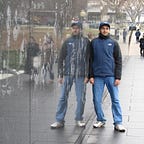Visiting NYC? Where to find cleanest restaurants and cuisine types in Manhattan
NYC Restaurant Inspection Results Analysis
Introduction
NYC is home to more than 27,000 restaurants with a wide variety of choices available for all cuisines. If you have lunch and dinner at different eateries everyday then it will take you 37 years to visit all of them.
Having studied and worked in Manhattan for more than 8 years, I had always wondered what do the Letter Grades A, B and C outside the restaurant meant. Upon exploring this further, it seems that New York City Health Department performs unannounced inspections on 24,000 restaurants every year and assigns a grade to them. This dataset is published by the Department of Health and Mental Hygiene (DOHMH) and is publicly available on NYC Open Data.
How are scores and grades assigned?
According to DOHMH, “Inspectors check for food handling, food temperature, personal hygiene, facility and equipment maintenance and vermin control. Each violation earns a certain number of points. At the end of the inspection, the inspector totals the points and this number is the restaurant’s inspection score; the lower the score, the better.”
Restaurants with a score between 0 and 13 points earn an A, those with 14 to 27 points receive a B and those with 28 or more a C.
Dataset Details
- Data Provided by : Department of Health and Mental Hygiene (DOHMH)
- Dataset Link
- Data Dictionary
Basic Dataset Commentary
- Rows : ~400,000
- Columns : 26
- Inspection Data Range : Jan’15 to Mar’20
Analysis
I was interested in exploring only Manhattan restaurants, hence I filtered the data accordingly. While performing the exploratory data analysis, I felt the need to perform some data cleaning (especially with cuisines) as well as feature engineering to get insights on my questions. As part of feature engineering, I created new variables as well as kept the latest snapshot of the inspection results performed in last 4 years.
Which restaurants have “no violations” (green) or “most violations” (red) and where are they located?
When I found about this dataset, I was curious to know how hygienic and clean were my favorite restaurants (especially in downtown as well as near NYU). Additionally, I was also interested in knowing if there were specific areas/clusters where restaurants with “no violations” or “most violations” were found.
Key takeaways
- Next time when you are visiting Manhattan, then you can use (this link towards the middle of the page for interactive map experience) to identify the cleanest restaurants as well as the restaurants that you should avoid (just hover over the pin and restaurant name & address will be shown on tooltip).
- Being an optimist, I was hoping that all my favorite restaurants would have “no violations”. Unfortunately, most of them had at least one violations, hence it didn’t make this list. On a positive note, I was relieved to see none of them were present in the list with “most violations”.
- To my surprise, not all Michelin star restaurants were without violations. It seems even Michelin star restaurants are not always perfect and clean.
- I didn’t notice clusters of “no violations” and “most violations” in downtown and midtown. However, there seems to be a few clusters seen uptown (around central park).
Which cuisine restaurants are most clean vs least clean (see if anything surprises you)?
We all know that restaurants with different types of cuisines from all over the world can be found in NYC (it has over 27,000 restaurants). It is paradise for everyone who likes to try out different cuisines as well as for all foodies. I was interested in seeing the restaurant distribution by cuisines which received Grade A vs restaurants which received Grade B & Grade C.
In the dataset there were lot of varieties of cuisines, hence in order to answer this question I had to create a new cuisine category variable (which was based on my judgment of cuisines).
Key takeaways
- The results shown above were in-line with my expectations. Maybe I was expecting a bigger pie for “Asian” cuisine restaurants with Grade A (most hygienic). One other thing that surprised me was there were twice as many American cuisine restaurants vs Asian cuisine restaurants with Grade A.
- Other thing which surprised me was for Grade B and Grade C (less hygienic), where Asian cuisine restaurants had the biggest share followed by American cuisine restaurants. I was glad to see that the list of less hygienic restaurants didn’t have many Cafés.
- My favorite cuisine is Asian cuisine (which could have led me to come up with the above conclusions).
- Explore the interactive version of the above sunburst chart using this link. Make sure to click on the cuisine category.
How inspection and violations have changed for Manhattan restaurants over time (2017–2019) for different cuisines
The above two questions focused on analyzing only “graded” restaurants. However for this question, I was interested in analyzing all restaurants inspected in Manhattan over recent years broken down by cuisine category (Note that not all inspected restaurants will have grading). I wanted to see the inspection vs violation trend over years for different cuisines i.e. whether it is trending up/down or staying the same.
Key takeaways
- Based on the table above, we do notice that the number of inspections are going up consistently over time for all cuisines. Along with that even the number of violations are going up (which is expected).
- Unfortunately, the average number of violations per restaurant for all cuisines are going up which means that the overall hygienic/cleanliness level is becoming worse over time for all cuisines.
Github code for this analysis can be found here.
